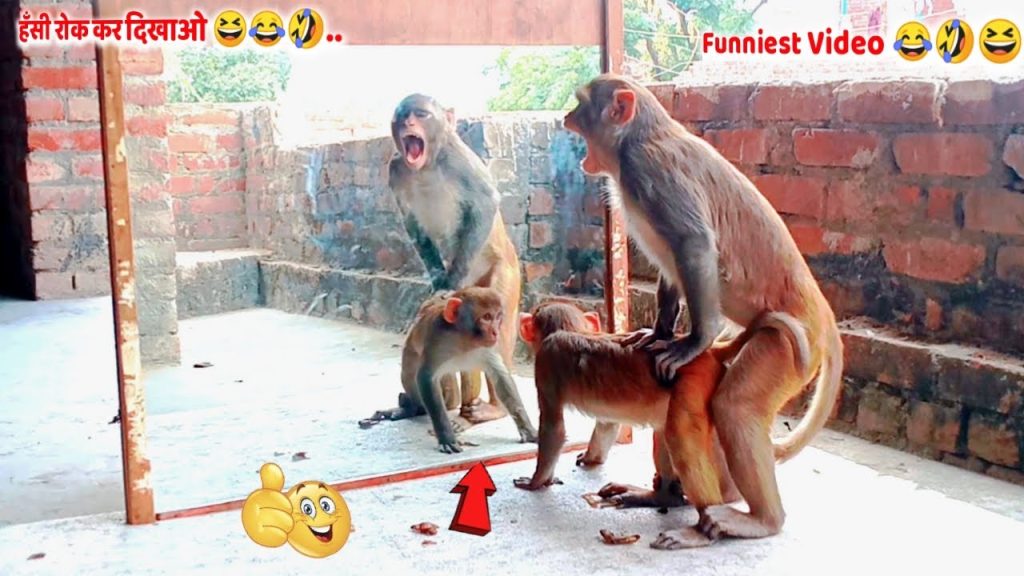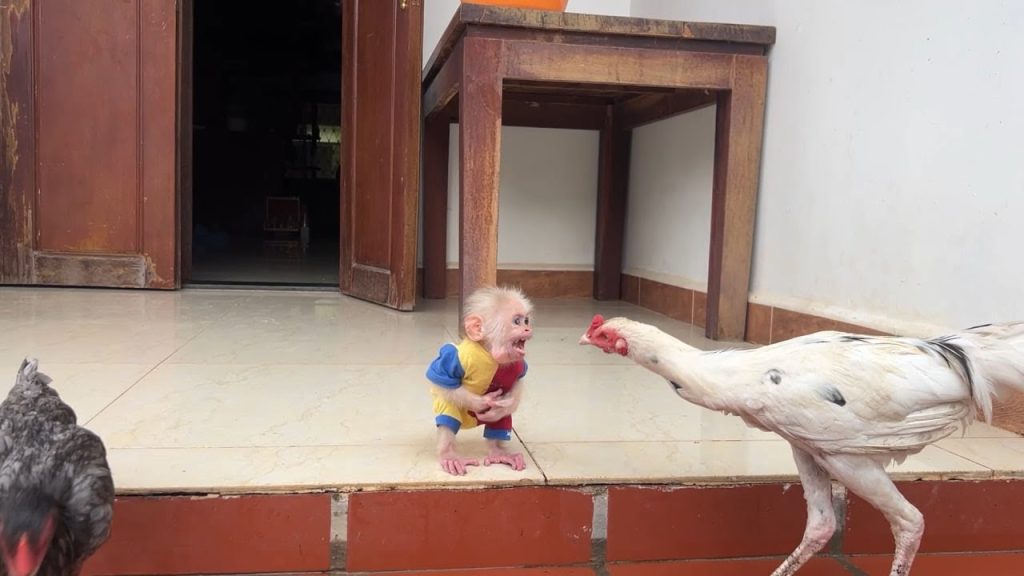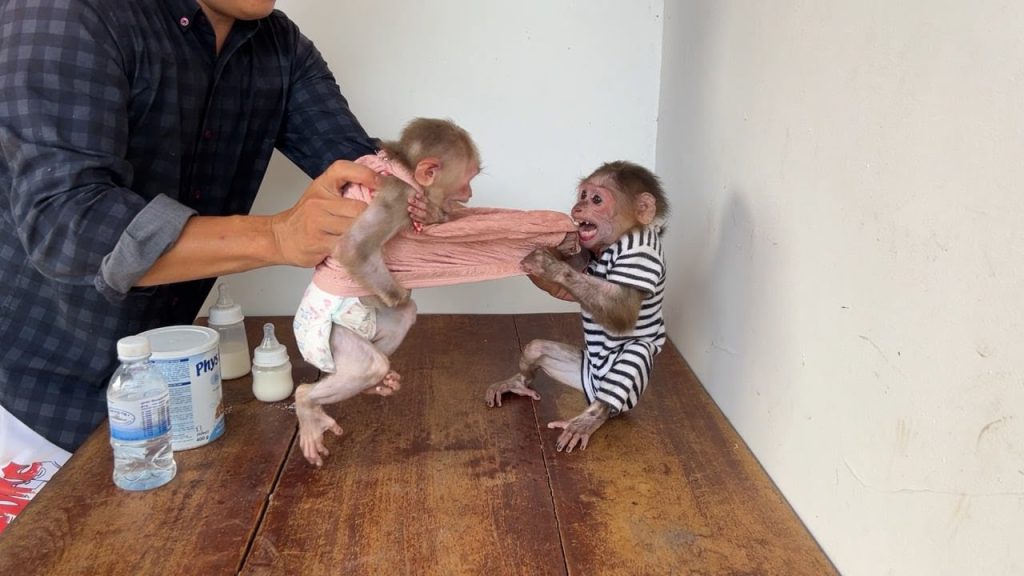
In the heart of the jungle, where sunlight dances across leaves and animals carry on their daily routines, a curious object suddenly becomes the center of attention: a mirror. To humans, a mirror is simple and familiar, but to wild monkeys who have never seen their own reflections, it becomes a mysterious doorway to unexpected emotions — confusion, excitement, challenge, and wonder. Their reactions reveal not only the humor of the moment but also something deeper about instinct, intelligence, and social behavior in animals.
At first, the troop of monkeys goes about its morning quietly. Babies cling to their mothers, juveniles play in the branches, and the dominant adults watch over the group with a mixture of pride and vigilance. Everything feels ordinary until one young monkey spots the reflective surface. She approaches cautiously, freezes, and then stares directly into the mirror. In her eyes appears an emotion familiar to us all when encountering something new: surprise.
Her reflection copies her, and this act of imitation seems suspicious to her. She tests it — raising her eyebrows, then leaning forward to poke gently at the shiny surface. The “other monkey” mirrors every movement. To her, this is not her face; this is another being who mimics her every gesture. Confusion mixes with curiosity, and instinct instructs her to remain alert. Is this stranger a friend, a rival, or something entirely different?
When the troop leader arrives, the scene shifts from curiosity to comedy and authority. Confident and protective, he approaches with bold posture, ready to defend his family from the unknown intruder. He grunts, raises his arm, and attempts to assert dominance. Yet every action is met with perfect imitation. The leader, usually respected and never challenged in this manner, finds himself unexpectedly perplexed. His challenge is returned by a phantom rival who cannot be intimidated nor touched. This moment transforms him from fearless protector to confused observer, and the troop watches with amusement, almost as if questioning his authority.
Among the younger monkeys, reactions range from playfulness to panic. Some attempt to engage their reflections as playmates, spinning and jumping with delight. Others retreat in dramatic fear, as if encountering a supernatural being. A baby, innocent and joyful, tries repeatedly to touch the reflection, only to tumble backward in surprise each time. Meanwhile, a mother gathers her little one protectively, suspicious of the “copy” mother in the mirror.
This event highlights something profound about animal cognition. While the experience is humorous to witness, it also illustrates the boundaries of instinct and self-recognition. Unlike humans, who understand mirrors, many animals perceive reflections as unfamiliar individuals. Yet, the monkeys’ reactions — testing, exploring, and showing emotion — reflect intelligence and curiosity.
Ultimately, the mirror becomes more than an object. It becomes a stage where nature, instinct, and humor intersect. Watching the troop navigate confusion and fascination reminds us of the beautiful complexity of animal minds. In their curiosity, fear, and playful attempts to understand the “other monkeys,” there is a charming reflection of our own desire to comprehend the world around us.


